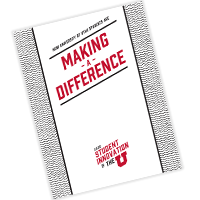TraumaXR is a multi-user, process-based trauma simulation that allows surgeons and nurses to train in a shared virtual space. This cutting-edge technology will also allow rural health systems to practice uncommon trauma cases, which they may not normally experience.
Overseen by the Therapeutic Games and Applications Lab (The GApp Lab) at the University of Utah, TraumaXR is being developed by six graduate students in the Master of Entertainment Arts & Engineering program: Liz Ross as artist, John Davies as tech artist, Arash Tadijiki and Boson Huang as engineers, and Sritej Canchi as the producer. Each student is participating in a Digital Fellowship with The GApp Lab, which is a division with the Center for Medical Innovation.
The simulation will involve multiple users, the virtual patient, surgeon, nurse, and a remote operator allowing for surgeons and nurses to practice a variety of trauma scenarios remotely all while receiving real-time feedback. The technology that TraumaXR has developed will enhance the accessibility, bring down costs, and increase modularity.
TraumaXR is focused on creating an immersive realistic experience by using the latest virtual reality (VR) technology. “Surgeons and nurses will be able to feel the experience just by getting into the VR headset,” Canchi said.
Currently, surgeons practice on “moulage patients,” or training models or actors with realistic looking injuries, which require more money, time, and resources compared to TraumaXR’s tech. “We wanted to make it cheaper and more accessible and will provide a much more realistic scenario,” Davies said.
At the 2020 Silicon Slopes Tech Summit, the team showcased their simulation for the first time as part of the University of Utah Health’s focus on innovative healthcare.
More articles like this in ‘Student Innovation @ the U!’
Find this article and a lot more in the 2020 “Student Innovation @ the U” report. The publication is presented by the Lassonde Entrepreneur Institute to celebrate student innovators, change-makers, and entrepreneurs.




